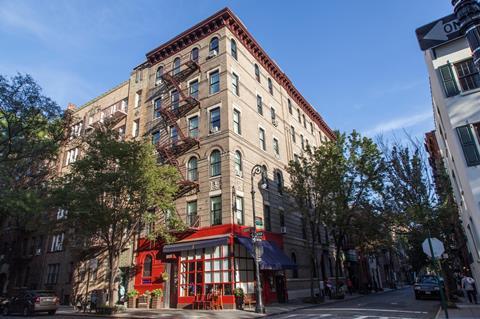Thirty years after the pilot of Friends, David Rudlin recalls how the sitcom’s portrayal of city living influenced a generation’s attitudes towards urban life, shaping perceptions of high-density living and its appeal as a vibrant, community-focused alternative to suburbia

This year marks the 30th anniversary of the pilot episode of Friends, The One Where Monica Gets a Roommate. I can’t claim to have been a huge fan, but like millions across the planet, I have seen my fair share of episodes. A clutch of newspaper articles and opinion pieces have marked the anniversary, exploring the cultural influence of Friends on fashion, language, social habits, and the growth of coffee shops. But one thing they seem to have overlooked is its effect on city living.
In 1999, I was part of a team with the market research company Mori, commissioned by the Urban Task Force to run a series of focus groups on attitudes to living in cities. The results were published in a report entitled But would you live there? Shaping attitudes to urban living. It is hard to believe now, but at the time the prevailing view was that, outside certain parts of London and Edinburgh, people who wanted to live in city centres were seen as a bit unusual.
This perspective was backed up by data, mostly sponsored by housebuilders, but backed-up by organisations like the Town and Country Planning Association (TCPA). It showed that most people wanted to live in the suburbs. The late Michael Breheny, an academic closely associated with the TCPA, accused me of ‘town cramming’ – forcing people against their will to live in cities that he described as dirty, dangerous, and overcrowded. He conceded that a few people might want to live in apartments, but argued they were a tiny proportion of the population.
Our research was conducted through extended focus groups in London, Manchester, and Bristol. A group of participants were selected by Mori to be representative of the population of each place. The first session was a free-form discussion about attitudes to cities. I then gave a slide presentation selling city living, followed by further discussion to see if I had persuaded them.
Thirty years on, city centres that used to be deserted after 6 pm on weekdays are now full of Rachels, Monicas, Phoebes, Joeys, Chandlers, and Rosses
A few of the slides that I used really cut through. One was an early advert from Urban Splash, showing a fridge packed with symbols of all the things you could do in the city. Another was a still from Friends. Almost all the younger participants were drawn to the image it painted of attractive people living together in an apartment building and hanging out at Central Perk. Far from town cramming, this was high-density, mixed-use, car-free living – and it looked pretty good.

Truth be told, the initial discussions revealed that people were still wary of cities at the time, paradoxically seeing them as both overcrowded and oppressive, yet also run-down and in decline. Crime was a significant concern during an era when local newspapers often filled their front pages with court reports. It is telling that one of the milestones in Manchester’s regeneration was an agreement between Howard Bernstein and Paul Horrocks, then editor of the Manchester Evening News, to move crime reporting to the inside pages.
However, attitudes were shifting, and Friends was very much at the forefront of this. We found that committed city dwellers (the ‘pioneers’, as we called them) were indeed a relatively small part of the population, being actively drawn to the risks and excitement of urban life. But there was a much larger group of urban ‘settlers’ who were persuadable. They saw the suburbs as boring and, provided the risks of city living could be mitigated, they were well up for the idea of city living. Thirty years on, city centres that used to be deserted after 6 pm on weekdays are now full of Rachels, Monicas, Phoebes, Joeys, Chandlers, and Rosses.
The problem with the debate on housing was that commentators assumed that everyone was a bit like them. When they said, ‘what people want is…’, what they really meant was, ‘what I want is probably representative of what most people want.’ It was a short step from this to insisting, ‘this is therefore the type of housing we should build.’
As we argued back then, there are as many residential preferences as there are people. Plenty of people still aspire to a suburban house, which is fine. But in the 30 years since the first episode of Friends, the housing market has become far more diverse. Anyone who thinks they know what most people want – Georgian housing, perhaps? – is mistaken.
Postscript
David Rudlin is director of Urban Design at BDP and visiting professor at Manchester School of Architecture.
He is a co-author of High Street: How our town centres can bounce back from the retail crisis, published by RIBA Publishing.
















No comments yet